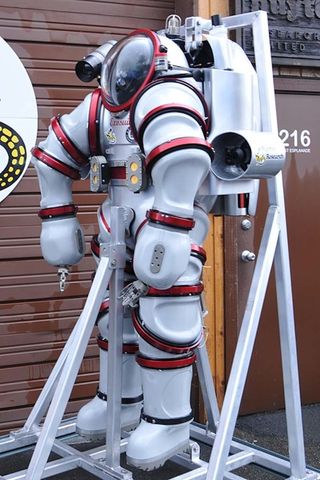
Innovative Metal 'Exosuit' Takes Divers to New Depths

It looks like something astronauts might wear in space, but this metal suit actually has a more Earth-bound purpose: to enable divers to work deep underwater without needing to spend time in a decompression chamber after they return to the surface.
The hard metal dive suit, known as Exosuit, is designed for users to operate underwater safely down to a depth of 1,000 feet (305 meters), reported Wired. The $600,000 suit is equipped with a so-called atmospheric diving system that maintains cabin pressure of the surface, which means divers do not have to worry about decompression time. The suit's life support system also scrubs carbon dioxide from the air inside the suit, and is capable of sustaining a total of 50 hours of underwater work. Despite the suit's bulky appearance, the 18 rotary joints in the arms and legs ensure divers can move around freely underwater and have enough dexterity to perform delicate work, company officials said. [See Photos of the Metal Diving Exosuit]
So far, the Exosuit has been used by divers to complete repairs on water supply pipes in New York City, and to monitor oil pipelines for leaks off the coast of Dubai in the United Arab Emirates, according to Wired. The Exosuit was developed by Nuytco Research Ltd., a Canadian technology firm that builds and operates diving suits, submersibles, remotely operated underwater vehicles, and other specialty diving equipment.
Follow Denise Chow on Twitter @denisechow. Follow Live Science @livescience, Facebook & Google+.
Sign up for the Live Science daily newsletter now
Get the world’s most fascinating discoveries delivered straight to your inbox.

Denise Chow was the assistant managing editor at Live Science before moving to NBC News as a science reporter, where she focuses on general science and climate change. Before joining the Live Science team in 2013, she spent two years as a staff writer for Space.com, writing about rocket launches and covering NASA's final three space shuttle missions. A Canadian transplant, Denise has a bachelor's degree from the University of Toronto, and a master's degree in journalism from New York University.
